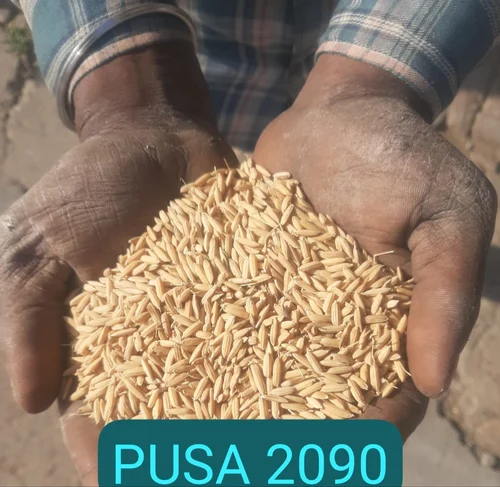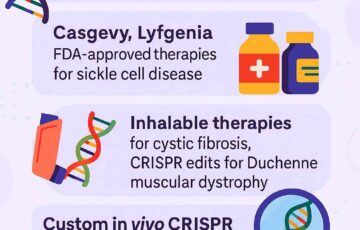Exploring the Potential of Pusa-2090 rice variety
GS-3: Environmental Pollution & Degradation
Focus:
Pusa-2090, a new rice variety developed by IARI, offers a promising solution to combat stubble burning in northern India. Its early maturation period allows for timely wheat sowing, reducing the need for farm fires, which contribute significantly to air pollution during the post-harvest season.
Introduction to Pusa-2090 Rice Variety
- Objective: Reduce stubble burning and the resulting farm fires during the transition between rice and wheat cultivation.
- Comparison: Pusa-2090 offers yields comparable to Pusa-44 but matures earlier, facilitating timely wheat planting.
- Harvest Timing: Pusa-2090 matures by early to mid-October, preventing the need for stubble burning before wheat sowing.
- Current Usage: Many farmers continue to grow Pusa-44 despite its ban, primarily due to its high yield and widespread popularity.
- Environmental Concern: Pusa-44’s delayed harvesting period contributes significantly to air pollution in northern India due to straw burning.
What is Pusa-44?
- Type: High-yield rice variety.
- Maturity Period: Takes 155-160 days to mature.
- Environmental Impact: Contributes to stubble burning due to limited time for field preparation before wheat sowing.
- Dominance in Punjab: The primary choice for paddy cultivation in Punjab during the kharif season.
- Basmati Comparison: Basmati rice varieties produce softer straw and occupy less cultivation area.
- Cultivation Ban: Punjab Chief Minister has announced a ban on Pusa-44 starting in 2024.
- Government Action: The Punjab Chief Minister has announced a ban on Pusa-44 cultivation starting in 2024.
What is Pusa-2090?
- Origin: Cross between Pusa-44 and CB-501.
- Purpose: Designed to reduce stubble burning in Punjab and Haryana.
- Shorter Maturity Period: Matures in 120-125 days, addressing stubble burning issues.
- High Yields: Offers yields comparable to Pusa-44.
About Indian Agricultural Research Institute(IARI):
- Establishment: Formed in 1905, originally in Pusa, Bihar.
- Current Location: Renamed and relocated to Delhi in
- Administration: Managed by the Indian Council of Agricultural Research (ICAR).
Alternatives to Stubble Burning:
- PUSA Decomposers: Capsules containing fungi strains that accelerate the decomposition of paddy straw.
- Happy Seeder: A tractor-mounted device that cuts and lifts rice straw while sowing wheat into the soil and depositing the straw as protective mulch.
- Palletisation: Dried paddy straw is converted into pellets, serving as an alternative fuel source when mixed with coal in thermal power plants, reducing coal usage and lowering carbon emissions.
- Farmer Perspectives on Pusa-44:
- High Yields: Farmers like Harpreet Singh favour Pusa-44 for its high yield, ranging from 35-40 quintals per acre.
- Growing Time: Pusa-44 takes 155-160 days to mature, creating challenges for timely preparation for winter wheat crops.
- Straw Burning: Farmers often resort to burning leftover straw to clear fields quickly for wheat planting.
- Government Ban: Despite the Punjab government’s ban on Pusa-44, many farmers persist in cultivating it using saved seeds.
- Alternative Methods: Some farmers, such as Harpreet Singh, use sustainable methods like incorporating straw into the soil rather than burning it.
Advantages of Pusa-2090:
- Earlier Harvest: Maturing 35 days earlier than Pusa-44, Pusa-2090 allows for timely sowing of the wheat crop.
- Water Savings: The variety requires 5-6 fewer irrigations than Pusa-44, leading to significant water conservation.
- Response to Nitrogen: It is highly responsive to nitrogen-based fertilisers, improving growth and yield.
- Similar Tillering: The number of tillers and grains per panicle are comparable to Pusa-44, ensuring good yield potential.
- Farming Flexibility: Its early maturity allows farmers flexibility in crop rotations, enabling the planting of subsequent crops like potatoes.
Farmers’ Trials and Adoption:
- Initial Trials: Farmers such as Harpreet Singh are optimistic about Pusa-2090, expecting yields of around 35 quintals per acre.
- Expected Outcomes: Early harvesting of Pusa-2090 would leave ample time for planting wheat or alternative crops like potatoes.
- Future Planting Plans: Farmers are considering crop rotations with potatoes or maize after harvesting Pusa-2090, adding to the crop diversity.
- Concerns about Banned Varieties: Some farmers remain hesitant to switch to Pusa-2090 due to concerns about market procurement if Pusa-44 is banned.
- Growing Acceptance: If Pusa-2090 meets quality and yield expectations, it is likely to be widely adopted by farmers in regions where Pusa-44 is currently dominant.
Milling Quality and Market Acceptance:
- Comparison with PR-126: PR-126 is less favoured by millers due to lower rice recovery rates (around 63%) compared to the required 67%.
- Quality Standards: Pusa-2090’s milling quality is being closely watched. If it matches Pusa-44, it will meet government standards for rice recovery.
- Potential of Pusa-2090: If Pusa-2090 performs similarly to Pusa-44 in terms of grain quality, it will likely gain approval from millers and farmers alike.
- Farmer Associations: Groups like the Young Farmers Association in Punjab are advocating for varieties like Pusa-2090 that meet both yield and milling quality standards.
- Market Dynamics: The successful adoption of Pusa-2090 will depend on its ability to consistently deliver on yield and milling quality, making it competitive against existing varieties like Pusa-44 and PR-126.
Challenges:
- Farmer Resistance: Despite the government ban, many farmers continue to grow Pusa-44 due to its high yield and familiarity, resisting the switch to Pusa-2090.
- Cost of Equipment: Farmers who cannot afford expensive machinery like the Super Seeder may continue burning stubble, worsening pollution.
- Market Acceptance: Pusa-2090’s grain quality must match Pusa-44 for widespread acceptance by millers and procurement agencies.
- Procurement Concerns: Fear of government procurement restrictions on banned varieties like Pusa-44 makes farmers hesitant to fully adopt Pusa-2090.
- Awareness and Training: Lack of awareness about the benefits of Pusa-2090 and limited access to training on sustainable farming practices hinder adoption.
- Water Management: While Pusa-2090 saves water, regions without adequate irrigation facilities may still face challenges in optimising its potential.
- Policy Enforcement: Weak enforcement of bans and regulations regarding stubble burning and banned varieties complicates transition efforts.
Way Forward:
- Incentivize Adoption: Provide financial incentives for farmers transitioning from Pusa-44 to Pusa-2090.
- Subsidise Equipment: Offer subsidies for sustainable farming equipment like the Super Seeder.
- Strengthen Awareness Programs: Conduct extensive awareness campaigns to educate farmers on the benefits of Pusa-2090.
- Ensure Market Linkages: Guarantee procurement and fair pricing for Pusa-2090 to build farmer confidence.
- Collaborate with Millers: Engage millers to ensure that Pusa-2090 meets market standards.
- Water-Saving Initiatives: Promote efficient irrigation practices and provide support for water management technologies.
- Policy Support: Strengthen policy enforcement to phase out harmful practices and encourage sustainable crop varieties.
Conclusion:
Pusa-2090 emerges as a sustainable alternative to Pusa-44, with comparable yields, shorter maturation time, and environmental benefits. However, challenges like farmer reluctance, market acceptance, and the need for policy enforcement must be addressed to ensure widespread adoption and a significant reduction in stubble burning.
Source: The Indian Express
Mains Practice Question:
Discuss the role of early-maturing rice varieties like Pusa-2090 in addressing the issue of stubble burning in northern India. What challenges are associated with its adoption, and what measures can the government take to encourage its widespread use? (250 words)





